Last week, the Hubbard Fellows and I attended the 24th North American Prairie Conference (NAPC) in Normal, Illinois. The NAPC is always an enjoyable and thought-provoking conference that brings together scientists, photographers, land managers, poets, and prairie enthusiasts from across the country. This one was no exception, and it was great to be back in Illinois, where there is very little remnant prairie left but much concern about the remaining pieces.
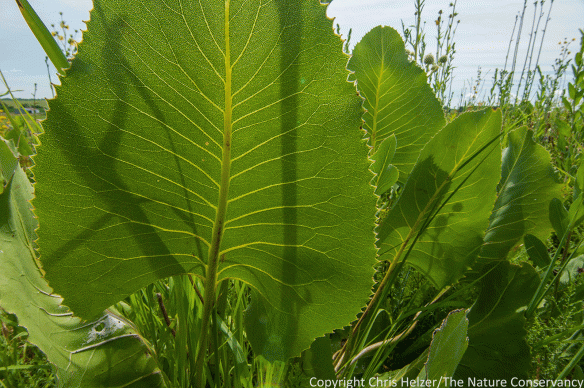
Prairie dock (Silphium terebinthinaceum) at The Nature Conservancy’s Nachusa Grasslands near Franklin Grove, IL. We don’t have prairie dock in Nebraska and I love seeing its gigantic basal leaves when I travel east.
On Tuesday, the Fellows and I joined the field trip to The Nature Conservancy’s Nachusa Grasslands, one of my very favorite places on earth. Bill Kleiman, Cody Considine, and an impressive array of volunteer stewards do fantastic work to restore and manage prairie on about 3,500 acres of land. The diversity and beauty of their restored prairies is unmatched at any site I’ve been to. However, the restorations are not there as flower gardens, but as habitat designed to defragment and enhance the prairie landscape.
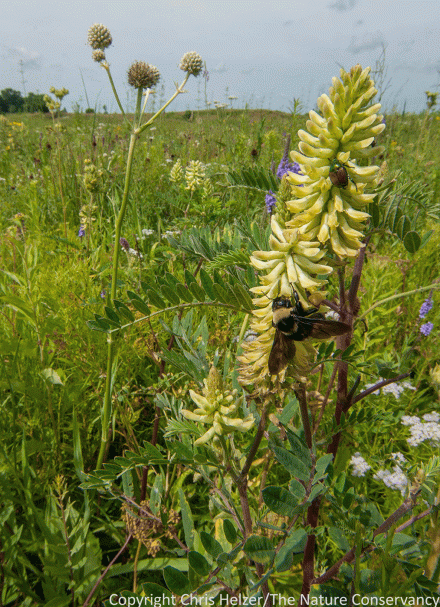
Bumblebees and other invertebrates were abundant at Nachusa. They contributed to the cacophany of color, movement, and noise at the site.
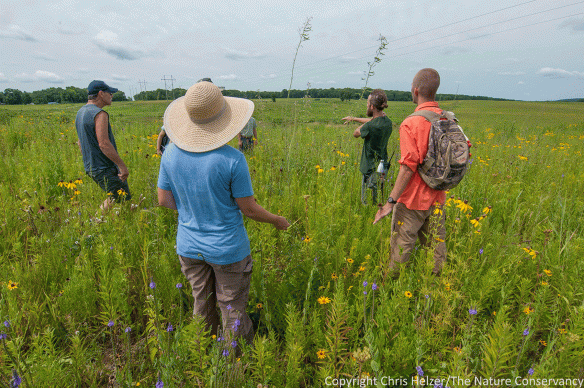
Former Nachusa staffer Mike Saxton led us through a 3rd year prairie planting where the plant diversity was already impressively high.
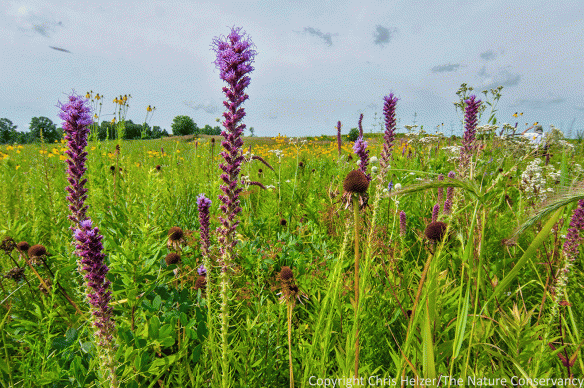
The abundance of showy flowers is almost overwhelming in some of the restored prairies, but the plant communities are also full of smaller and less auspicious species that help build ecological function.
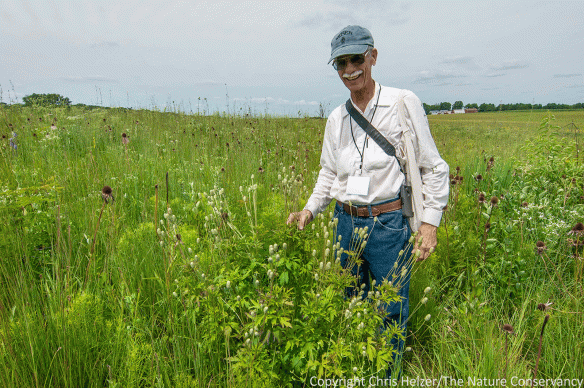
Carl Kurtz, a well-known prairie restoration guru in Iowa, stands next to a thimbleweed (Anemone cylindrica) plant we were admiring. Neither of us had ever seen the plant grow so large.
I last visited Nachusa a couple years ago as they were preparing to introduce bison to the site. The bison are settled in now, and it was fascinating to get a brief look at how those animals are interacting with the tallgrass prairie there. Nachusa Grasslands staff did a great job of engaging scientists to collect baseline data prior to the bison’s arrival and they are now measuring some of the early impacts. Watching how grazing bison change the plant and animal communities at the site will be a long-term but invaluable addition to our understanding of tallgrass prairie ecology.
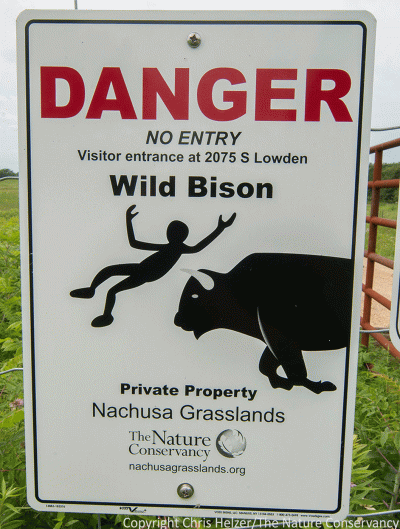
I only saw the Nachusa bison from a distance, so didn’t get any photographs of them. I did, however, photograph the signs they have posted around the perimeter of the bison-grazed prairie. I am a big fan of these signs.
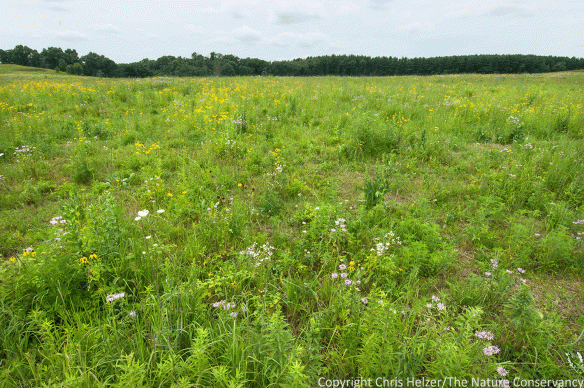
Interestingly, the bison have been spending much of their time grazing in some of the less diverse restored prairies. However, they were certainly impacting the vegetation structure of those places they grazed – creating many patches of short-cropped plants in and amongst the taller flowers.
For various reasons, about 3/4 of the bison area was burned this spring. The bison were certainly preferentially grazing the burned area, but because so much was burned this year, they didn’t create large areas of short vegetation. Instead they created sporadic small grazing lawns throughout much of the burned area. It will be really interesting to watch how that habitat heterogeneity changes which animals use the prairie and how they use it. We were already seeing evidence of critters that like short vegetation (e.g., thirteen-lined ground squirrels) in areas where the plants normally grow too thick for them.
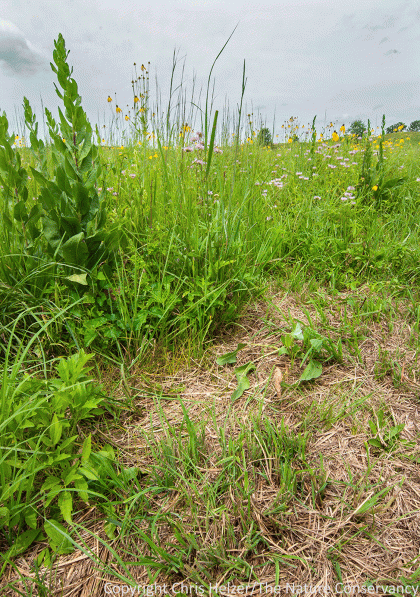
The bison were grazing primarily (though not exclusively) grasses – punching holes in the tall vegetation. Those “grazing lawns” can be really valuable as sunning spots for invertebrates and reptiles, and can also create opportunities for new plants to germinate and establish.
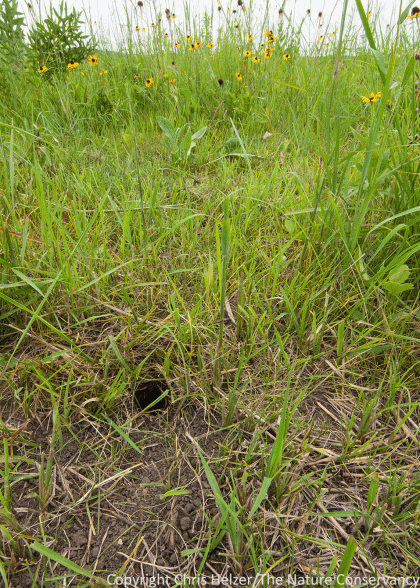
This thirteen-lined ground squirrel burrow was evidence of habitat changes already favoring animals that like short vegetation, even in small patches. Larger areas of concentrated grazing can provide habitat for birds (like upland sandpipers) and other species that need short vegetation on a larger scale.
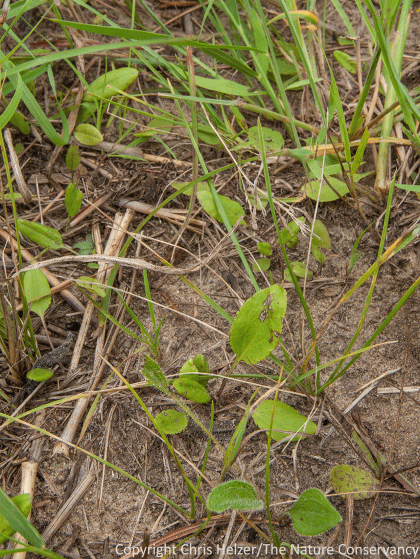
We saw plenty of spots in which new plants had germinating where bison had cropped off competing grasses, including these ragwort (Packera sp.) seedlings and the purple coneflower (Echinacea sp.) seedling in the bottom right.
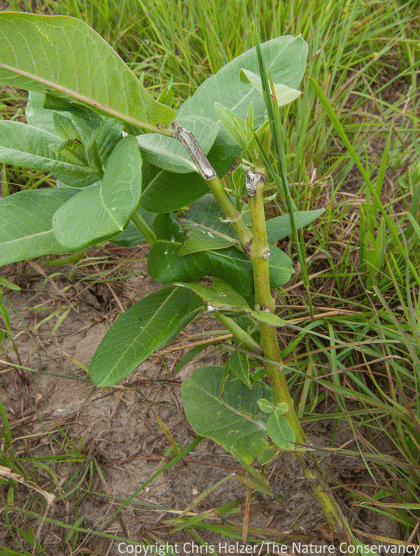
Interestingly, most of the common milkweed plants we saw in the bison area had been grazed. We see the same thing in cattle pastures in Nebraska. We assumed bison were eating the milkweed, but deer, box turtles, and other animals could also be culprits.
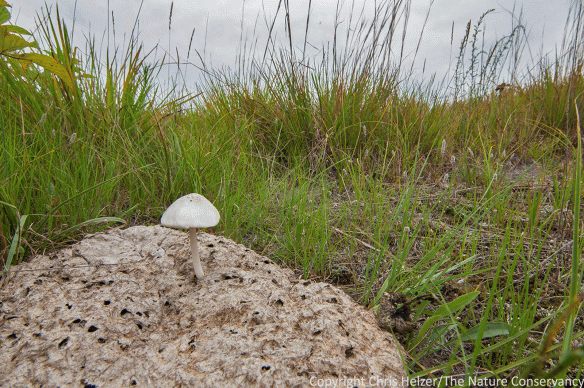
Some bison impacts are unrelated to cropped vegetation, including bare ground created by wallowing, and the concentration and redistribution of nutrients through manure – something capitalized on by this mushroom.
There was much discussion at the conference about the historical abundance and impacts of bison in eastern tallgrass prairie (more on that in a future post) but the introduction of bison to Nachusa Grasslands was not done because of history. Instead, staff and volunteers are hoping that bison will catalyze more diversity in plant and animal communities in ways that weren’t possible with only fire and mowing management. The science used to evaluate those impacts should teach us more about tallgrass prairie, it’s ecology, and its potential.

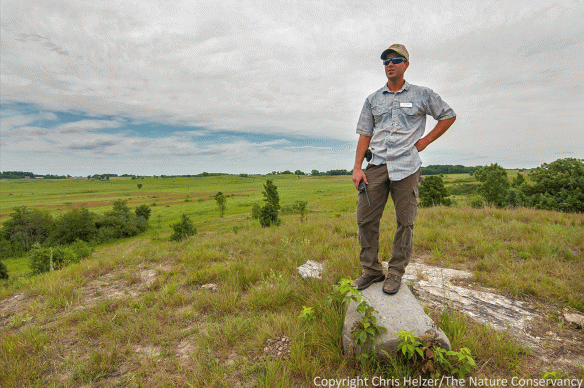
Thanks, Chris, for another fine post. Many of us are eager to learn from the Nachusa experiment and appreciate your insights.
Thank you for sharing! Makes me want to visit Nachusa! And i love the description of contrasts between IL and NE.
Was great to meet you Chris! I learned a lot walking with you and Cody for even that short inspection. Still hoping to see you in Nebraska some day.
Thanks for posting the pictures. What a beautiful place! Great to see you and the TNC crew hard at work. Looking forward to the bison history analysis… those were some tense conversations!
I had to bail out and didn’t get to go on the field trip. So glad you posted the photos and thoughts. Great job describing the floral and faunal habitat diversity that was not discussed in the oral presentations.
That area is just down the road from us. Have to go see it. Hate to mention it, but the black beetle on your bumblebee picture is an invasive species, a Japanese Beetle. We had a plague of them a few years back, but the population was knocked back due to cold winters, but they seem to have made a significant comeback this year.
I am curious if the change in habitat structure might reduce the population of rare plant eating voles?